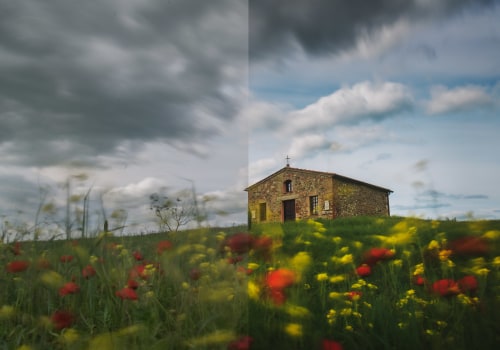Are you looking for a way to upload and organize your photos quickly and easily? Whether you're a professional photographer, hobbyist, or just starting out, having an organized portfolio of images is essential for showcasing your work. With the right tools and techniques, you can make sure your photos are always accessible and organized in one place. In this article, we'll discuss the best ways to upload and organize your photos, so that you can create a professional website and portfolio to showcase your work.
Organizing your photos
is a key part of creating a professional website. Here are some tips for making sure your photos are organized and look their best:1.Choose the right file format
: Make sure you select the right file format for your photos.JPEG is the most common format and is suitable for most purposes. PNG is a better choice for graphics or images with text, while TIFF is best suited for high-resolution images.2.
Select the right size
: The size of your photo will affect both its quality and the loading time of your website. Select an appropriate size for your photo that is large enough to show off its detail but not so large that it will take too long to load.3.Use metadata
: Metadata can be used to add additional information about the photo, such as its date, location, or title. This can be very useful when organizing and searching for photos in the future.4.Utilize image editing software
: Image editing software can be used to make sure your photos look their best before you upload them to your website.This can include cropping, adding filters, or making adjustments to brightness and contrast.5.
Compress photos
: Compressing photos can help reduce their file size without significantly reducing their quality. This will make them easier to upload and will also help make sure your website loads quickly.Use Metadata
Using metadata to add more information about a photo is a great way to help you organize and find it in the future. Metadata includes information such as the date taken, camera settings, and location data. This data can be used to search for photos using specific criteria, such as “photos taken in London” or “photos taken with a certain camera setting.” It also helps you organize photos into different albums or categories.By tagging your photos with the correct keywords and metadata, you will be able to quickly search for the photos you need without having to manually sort through all of them. This allows you to spend less time searching and more time creating stunning photography portfolios.
Select the Right Size
Choosing the right size for your photos is essential when creating a professional website. The size of the photo can affect both the quality of your photo and the loading time of your website. Using a smaller size image can reduce the load time of your website, however the quality of the image can suffer if it is too small.This is because smaller images are often compressed, which can cause them to lose detail and appear pixelated. Using a larger size image can help to ensure that the image retains its original quality, however it can increase the loading time of your website. This could lead to visitors leaving your website before they have had a chance to view it in its entirety. It is important to strike a balance between the size of an image and the loading time of your website.
For most applications, an image size of around 500KB is ideal. This should provide a good compromise between image quality and loading speed.
Choose the Right File Format
When creating a professional portfolio website, it’s important to choose the right file format for your photos. Different file formats offer different levels of quality, and some are better suited to certain types of images than others. It’s important to understand which file formats are best for your needs so that you can upload and organize your photos in a way that will make them look their best.JPEG (or .jpg) is one of the most common file formats for digital photos, and it is suitable for most types of images. JPEG files are usually much smaller in size than other file formats, which makes them ideal for uploading and sharing online. However, JPEG files are also prone to quality loss when they are compressed or resized.
PNG
(.png) files are well-suited to images with a lot of detail or text, as they support transparency and allow for higher resolutions.PNG files also tend to maintain their quality better than JPEGs when compressed or resized. However, they are usually larger in size than JPEGs, making them better suited to professional photography websites where image quality is paramount.
TIFF
(.tif) is another popular file format for digital photos, and it offers high levels of quality and resolution. TIFF files are usually much larger than other file formats, however, which makes them unsuitable for web use, as they can take a long time to upload and load on a web page.GIF (.gif) files are popular for animated images, as they support animation and transparency. However, they are usually limited to 256 colors, which means they are not well suited to photographs with fine details. Choosing the right file format for your photos can be a tricky process, but it’s important to ensure that your images look their best when posted online. Understanding the various file formats available will help you upload and organize your photos in a way that will make them look their best.
Compress Photos
Compressing your photos can be beneficial when it comes to creating a professional website because it can help reduce their file size without significantly reducing the quality.By compressing your photos, you can make them easier to upload and manage, while still maintaining a high level of image quality. This is especially important for photographers who want to showcase their work on websites that have limited storage space. To compress photos, you can use a variety of tools such as photo compression software, online image compression services, or even the built-in compression features on many popular photo editing programs. When compressing images, it’s important to keep in mind that the smaller the file size, the more compressed the image will be, which may result in some loss of quality.
To ensure that your photos still look good after compression, make sure to adjust the compression settings according to the desired file size. Compressing images can also help save storage space and make them easier to share. This is especially useful when sharing photos with clients or other professionals via email or social media. Compressed images are smaller in size and therefore take less time to upload and download, making them ideal for web-based applications.
When compressing photos, it’s important to strike a balance between reducing the file size and preserving the image quality. By adjusting the compression settings accordingly, you can make sure that your photos look great and are easy to upload and manage online.
Utilize Image Editing Software
Image editing software is an invaluable tool for any photographer looking to create a professional-looking portfolio website. By using these programs, you can easily adjust the lighting, contrast, and color of your images, giving them a much more polished look before uploading them to your website. These programs also offer a range of features that can be used to enhance your photos, such as cropping, resizing, and adding text, borders, or special effects. With the help of image editing software, you can make sure that your photos are the perfect size and shape for your website, as well as being aesthetically pleasing.In addition, many image editing software programs come with built-in templates that can be used to create stunning photo collages or other types of graphical displays. This feature makes it much easier to showcase multiple images on your website in a way that looks professional and organized. Finally, some image editing software also has the ability to optimize your images for the web, making sure that they load quickly and look great on any device. By taking advantage of these features, you can make sure that your photos look their best when posted online. Creating a professional website requires more than just taking great photos - it also requires organizing and uploading them in the right way. Choosing the right file format, selecting the right size, using metadata, utilizing image editing software, and compressing photos are all important steps when it comes to uploading and organizing your photos.
By making sure you follow these tips, you can ensure that your photos look their best and help you stand out from the crowd.








